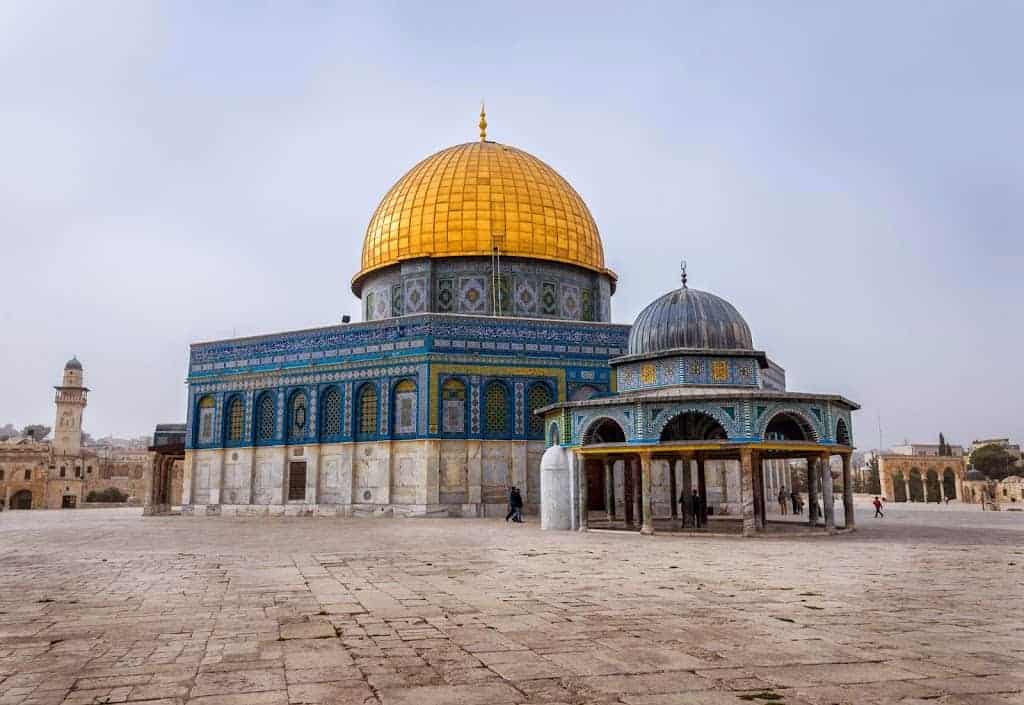Muhraqa Carmelite Monastery, Keren HaCarmel – Visitors Guide
Muhraqa Carmelite Monastery is traditionally believed to be the site where the Prophet Elijah triumphed over the Prophets of Baal.
Table of Contents
Map
Muhraqa Carmelite Monastery is situated in Keren HaCarmel, on the southeastern side of the Carmel Range, about 2.5 km northwest of Yokneam Illit, and about four kilometers southeast of Daliyat al-Karmel.
You can use the directions links below.
Directions for drivers: Link to Waze and Link to Google Maps
Directions for public transport: Link to Moovit
Interactive map of the area:
Parking
You can park for free by the entrance to the monastery.

Opening Hours
Monday – Saturday: 09:00 – 16:00
Sunday: closed.
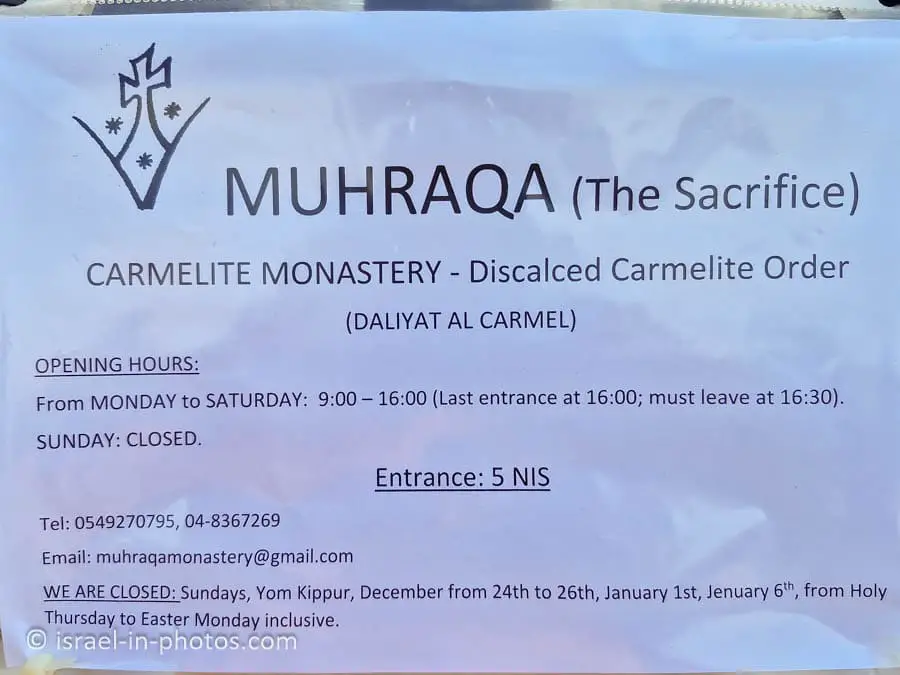
Entrance Fee
5 NIS per person.
Note: When we entered, they did not charge for my youngest daughter, who was five years old at the time.
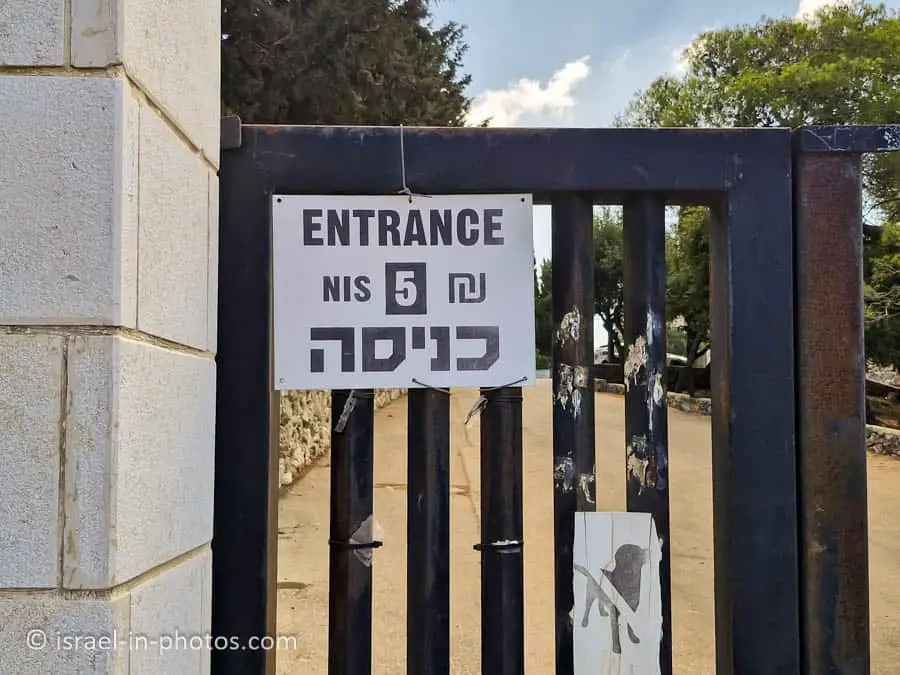
Contact Information
Phone: 04-8367269, 0549270795
Email: muhraqamonastery@gmail.com
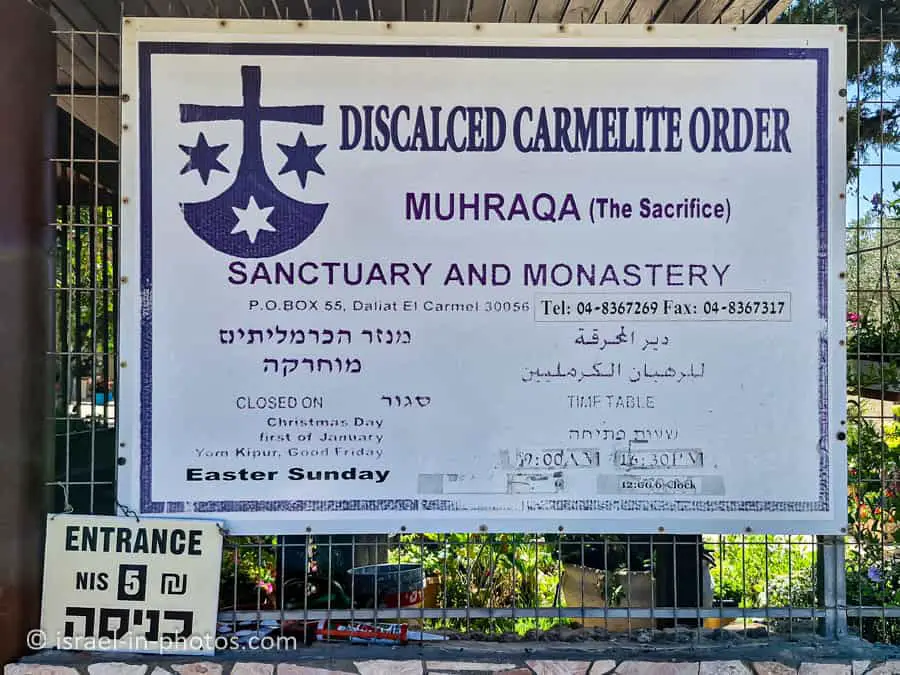
Trails
At the northern side of the parking lot, you can see a trail marking. You can complete different variations of the trail, and here is an interactive map from israelhiking.osm.org.il where one of the options is marked:
The length of the loop trail is 1.2 km, with a total climb and descent of 144 meters.
At Muhraqa Carmelite Monastery
Inside the monastery, you can find a small church, a lovely garden, and stunning views.
Basic Info
Keren HaCarmel (Arabic Muhraqa: “Monastery of the Burnt Offering”) is a peak in the Carmel Range, rising to an altitude of 474 meters above sea level. The peak is located on the southeastern side of the Carmel Range.
According to tradition, this is where the confrontation between Elijah and the prophets of Baal took place, when fire came down from heaven and only Elijah’s sacrifice was accepted. For this reason, a monastery was established there in 1867 by Carmelite monks who came from Europe, and who saw Elijah as a model of monasticism, religious zeal, and total devotion to God, qualities that were exemplified, among other things, in his confrontation with the prophets of Baal.
Source: Wikipedia
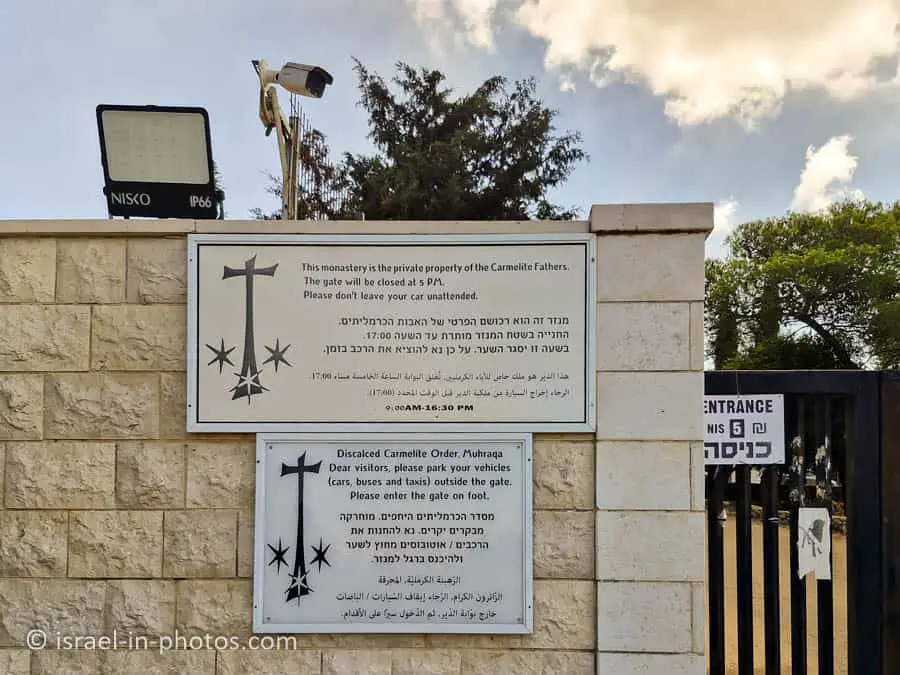
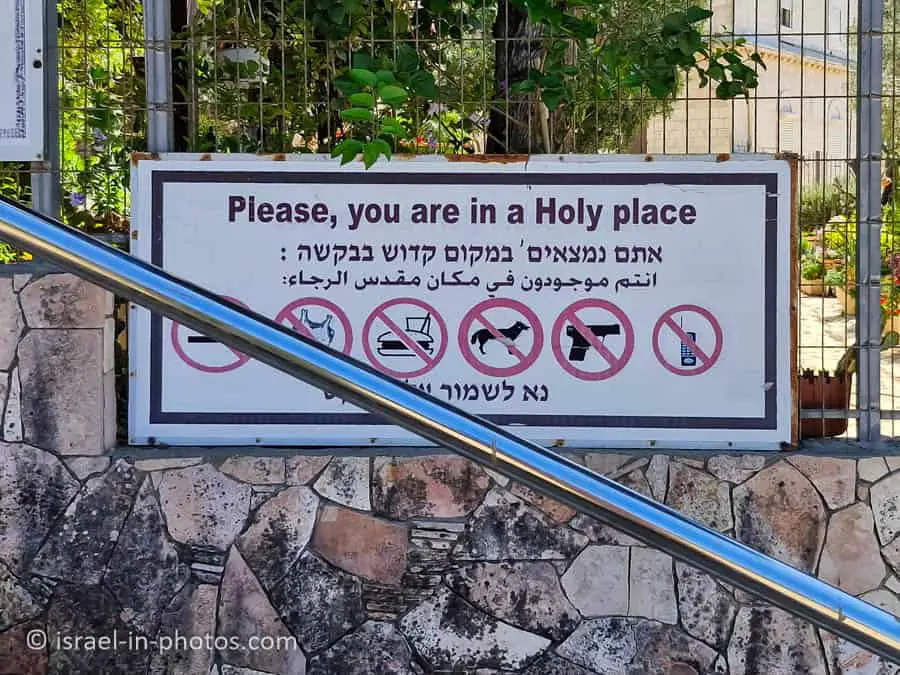
Let’s enter the garden to find the statue of Elijah and discuss the history of this place.
History
The site has attracted Jewish, Muslim, and Christian pilgrims throughout history. According to various testimonies, the earliest of which is that of Rabbi Benjamin of Tudela from the mid-12th century, a building stood there commemorating the altar erected by Elijah, although it seems to refer to the western edge of the mountain (now known as the “Stella Maris“).
The Carmelite Order purchased the land at Keren Carmel in the mid-19th century, partly because they feared that the Greek Orthodox Church in Israel would claim it first. After sufficient funds were collected, the Carmelite brother Jean-Baptiste Cassini was entrusted with the construction. However, a series of complications, both bureaucratic and otherwise, meant that it was not until 1867 that construction of the chapel and other buildings was completed on the site. Repeated demands from the Ottoman authorities to clarify the issue of land ownership, and concerns that the buildings already erected on the site would collapse, led to further delays in construction.
Lawrence Oliphant, known for his diplomatic and witty journalism, resided with his wife in the Druze village of Daliyat al-Karmel, near the site, in the late 19th century. In one of his letters to the British newspaper The Sun, Oliphant reported that the Carmelites were also using stones that probably had archaeological value to build the new monastery. Oliphant’s criticism did not delay the work, and in 1883 the construction of the nucleus of the monastery was completed, including a small prayer chapel. The site was initially inhabited by a few monks, and in 1907, a theological seminary also operated there. Against the backdrop of growing tensions in the region, the days of activity of the seminary, which was intended mainly for students from Lebanon, were short. The monastery was established in 1911 as a community within the Catholic Carmelite order, but it was closed at the outbreak of World War I, and the monks were forced to leave. The small church was renovated in the 1960s.
Source: Wikipedia
The Garden
The monastery’s courtyard is well-maintained, featuring a small garden. The garden features a gathering area, a sermon table, and several stone statues. The most prominent item in the monastery courtyard is the statue of Elijah, which has become the symbol of the place. The statue was made in 1958 by the Christian artist Najib Nufi. Nufi sculpted Elijah according to the prevailing Christian concept, and he is depicted as a warrior prophet full of anger who enforces religious belief by means of a drawn, blood-drenched sword that he carries in his raised hand, and his foot steps on the severed head of one of the prophets of Baal. The statue faces the monastery building and stands in a straight line with the church door and altar. Verses in Latin, Arabic, and Hebrew appear on the base of the statue.
The statue of Elijah that stands in the courtyard is not the original statue. The first statue was the work of a Carmelite monk from Bavaria and was brought to Israel in 1914 at the initiative of Father Cyril, who was the head of the Carmelite order in Carmel from 1905 to 1919. The statue that now resides in Nazareth is made of coarse, yellowish sandstone, the type of stone used to build the houses of the city of Munich in Bavaria. Elijah is sculpted with his head sadly bowed on his chest, as if ashamed of his deed. His right hand holds a lowered sword.
The scholar of the Land of Israel, Yehuda Ziv, believes that the pose expressed regret and sorrow for the rebuke of God: “Not by the wind of God… Not by the thunder of God… Not by the fire of God… (but) by the sound of a still, still voice”. According to the Jewish worldview. While it was still in its packaging, World War I broke out, and Turkish soldiers who were raiding the monastery broke open the box in the hope of finding a treasure. Disappointed, they cut off the statue’s head and its right hand, which holds the sword. The head was thrown into a nearby cistern. After the war, the head was lifted from the cistern and replaced, but the severed hand was not found. Two folk legends are associated with this statue. Initially, the amputation of the hand was attributed to Napoleon Bonaparte during the siege of Acre in 1799, and also to Kaukji during the Battle of Mishmar Ha’emek. According to legend, the two believed that as long as Eliyahu wielded the sword, they would not succeed in their war, and therefore, they sent soldiers to amputate Eliyahu’s hand.
Source: Wikipedia
Here are several photos from the garden:
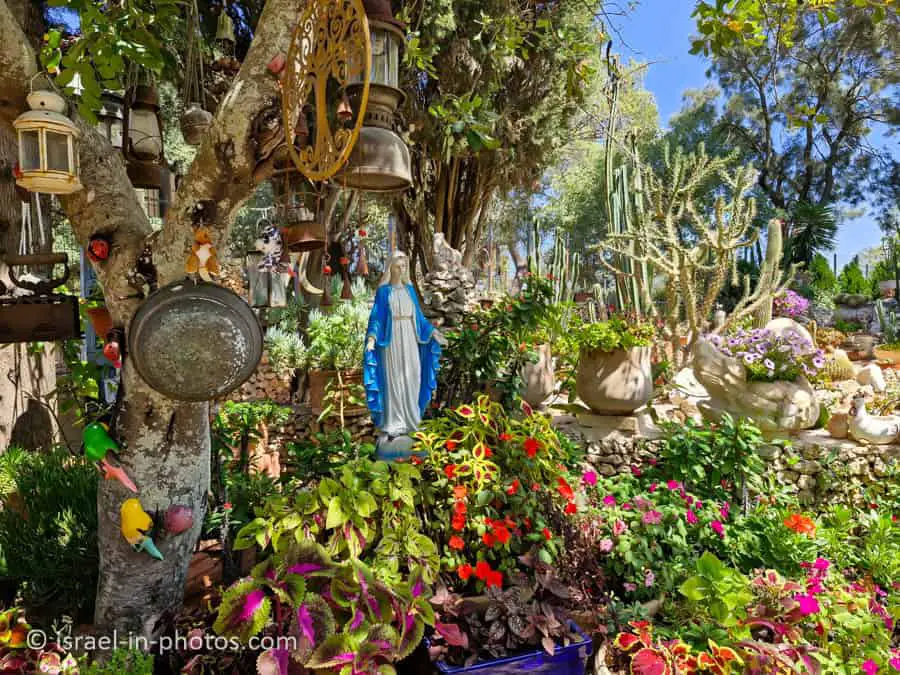
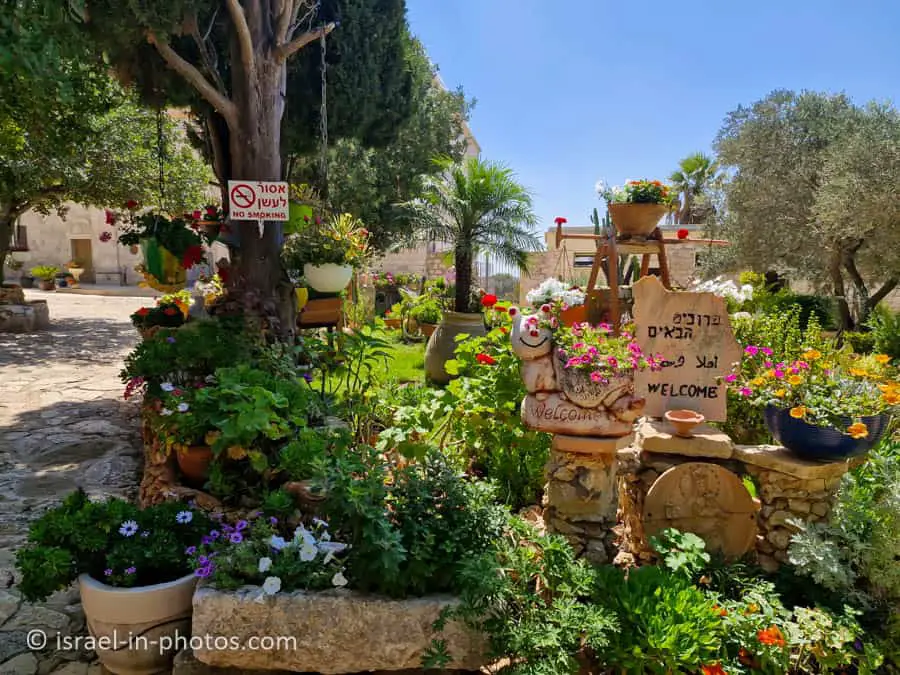
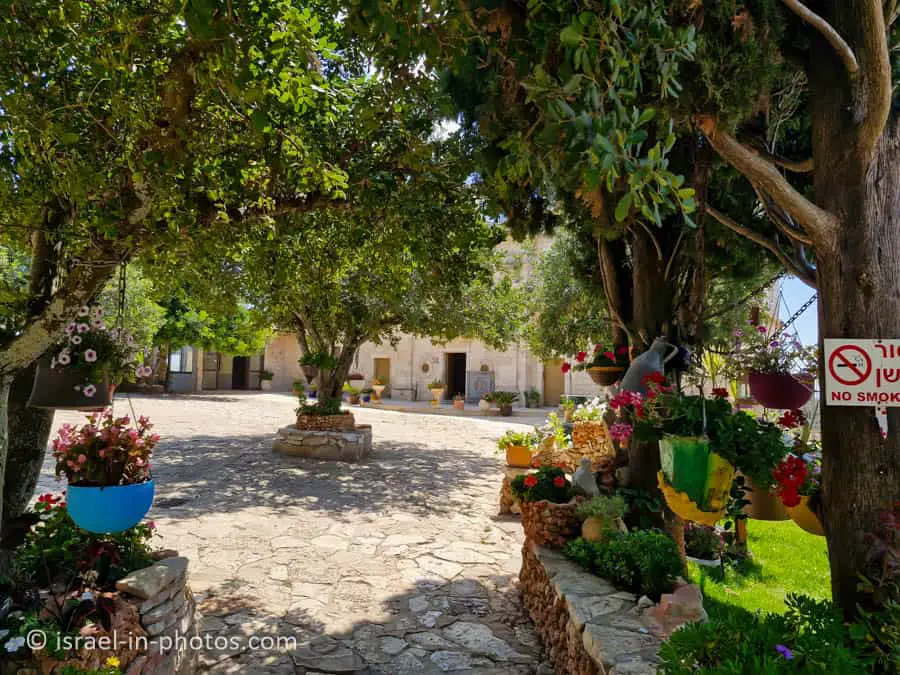
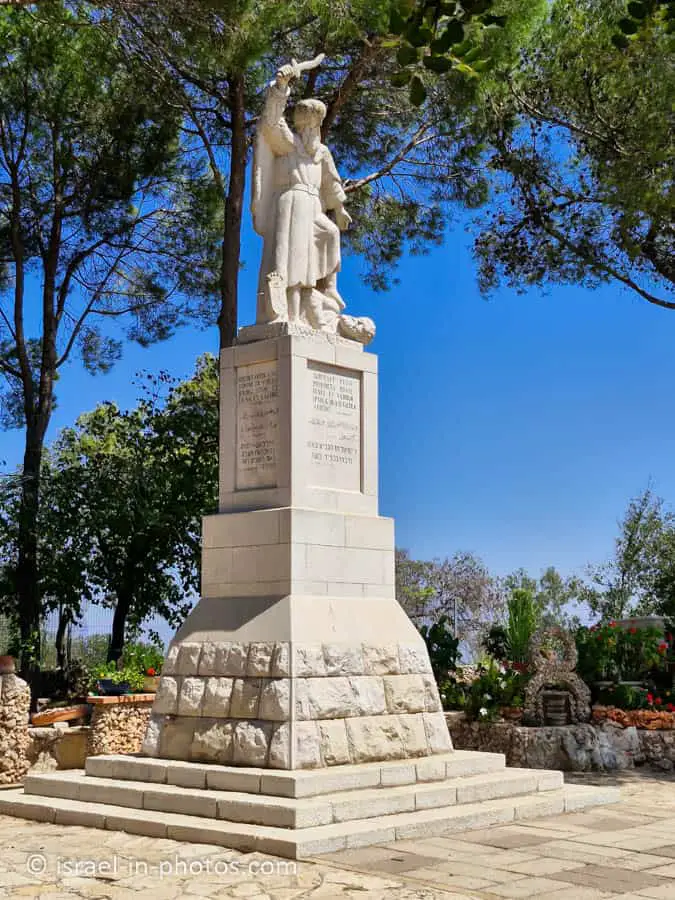
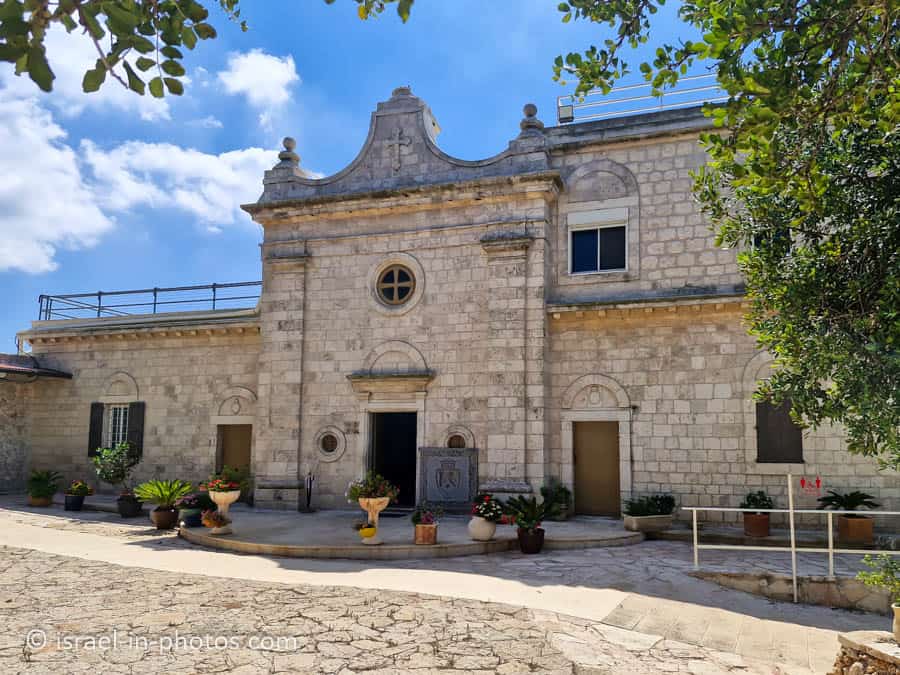
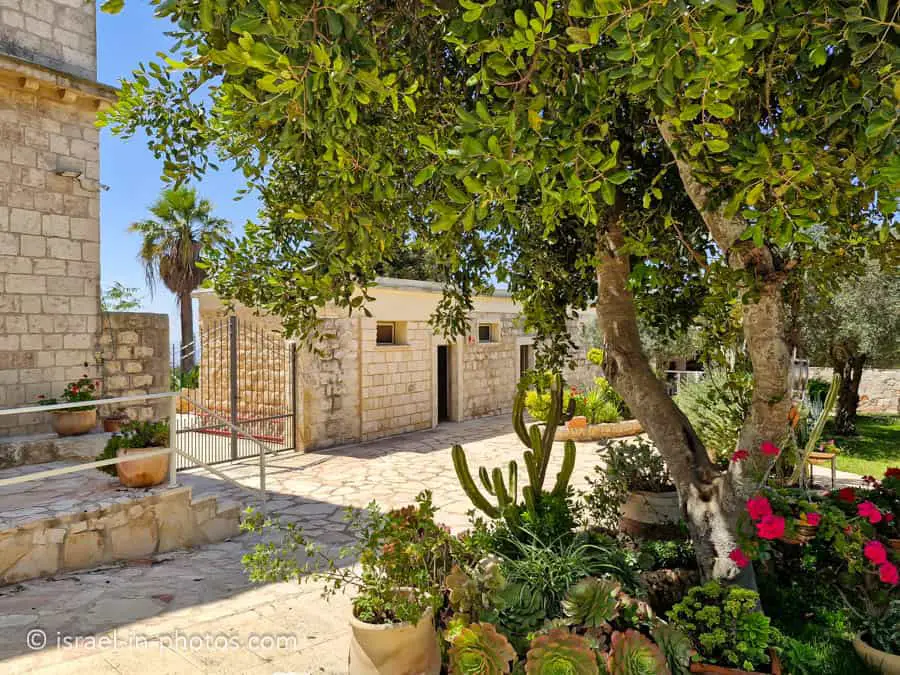
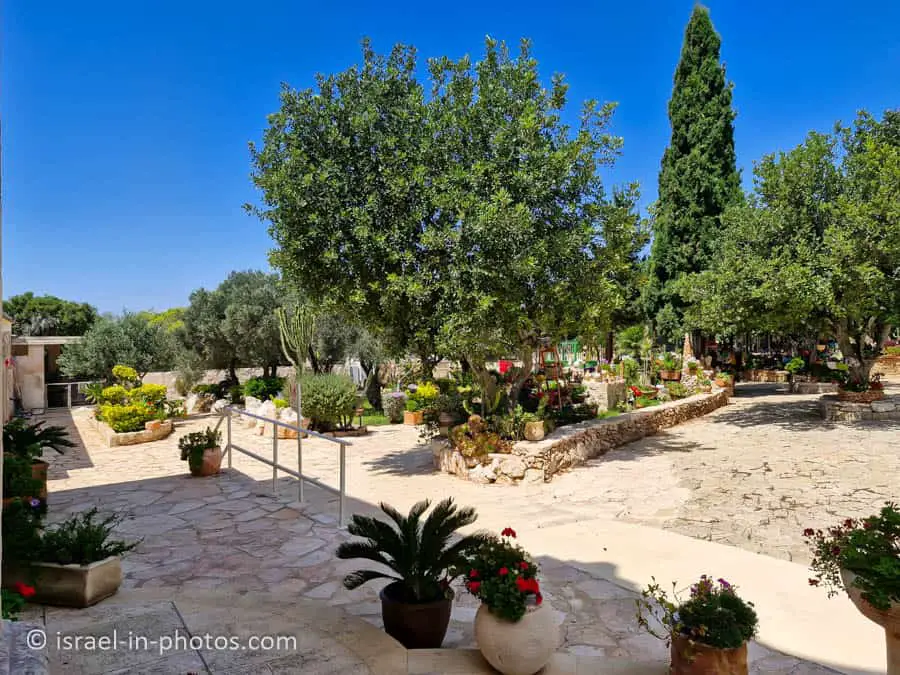
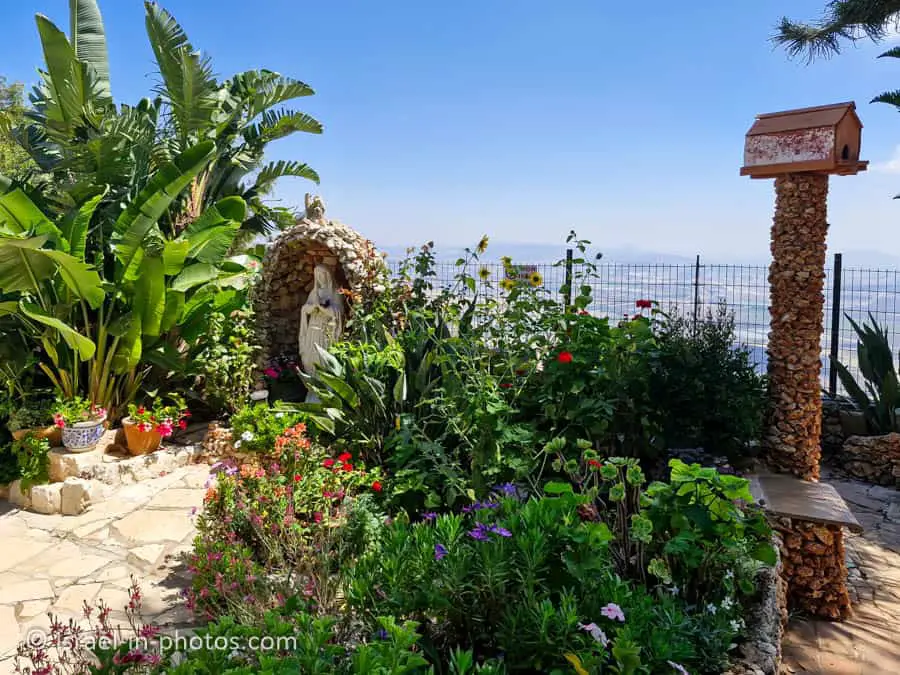
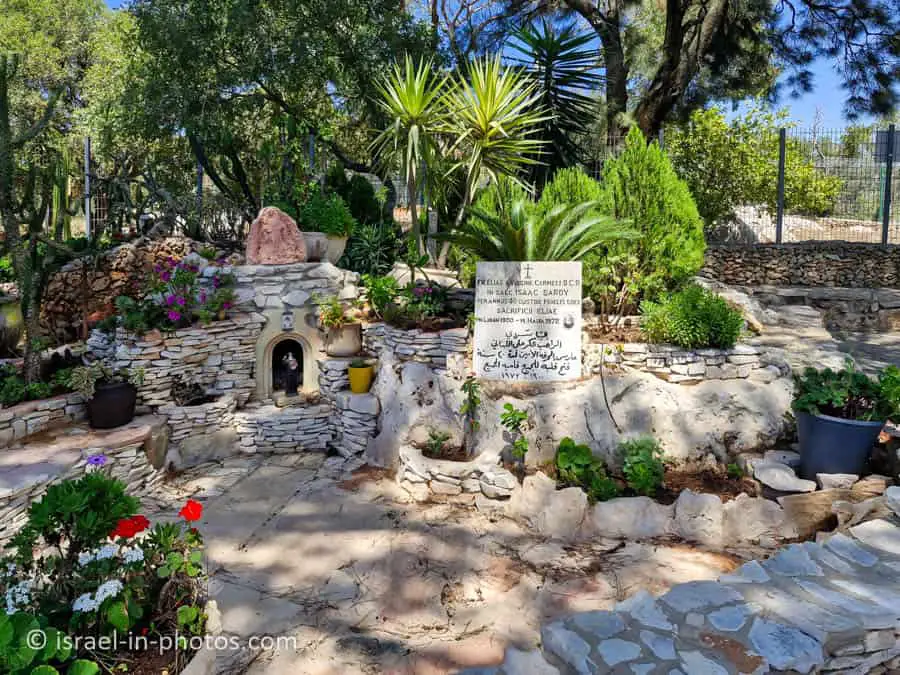
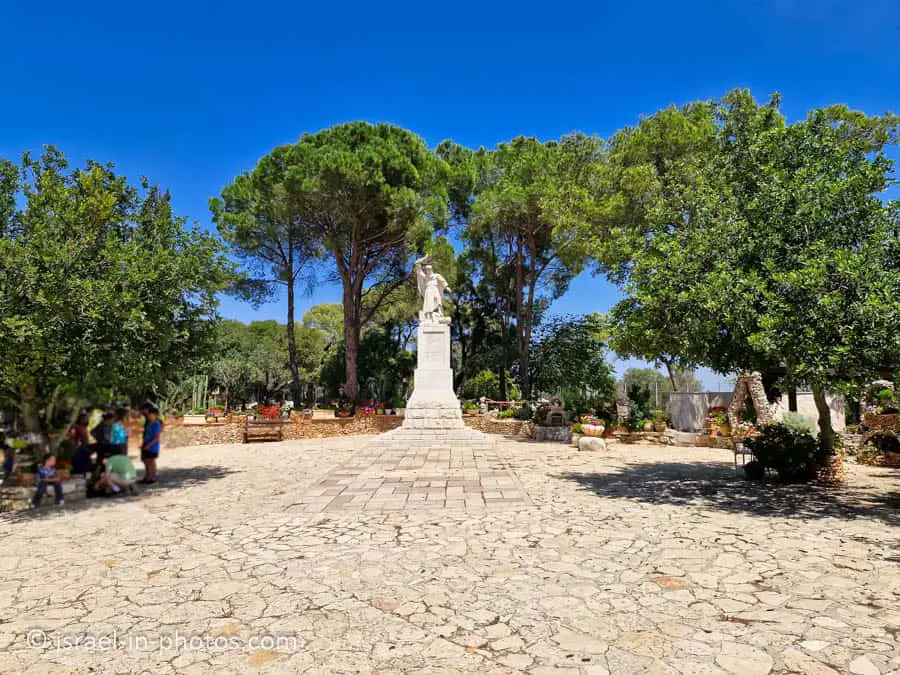
The Church
The small church in the monastery is a single space, covered by a vaulted ceiling. Light enters it through the entrance door and through a round window set in the wall above it. The walls of the church are painted white and decorated with a row of brown stones that surround the hall at the base of the vault. At the center of the church is an altar consisting of 12 undressed rocks, like the altar that, according to the biblical story, Elijah built there. Behind the altar is a simple wooden cross. On one of the walls is a relief depicting the angel who provided Elijah with food when he fled into the desert at God’s command, after informing King Ahab of the severe drought that would afflict his kingdom. To the right of the altar is a chapel in which the Madonna and Child are seen. Two rows of simple wooden benches serve the congregation. On the wall where the entrance to the church is located, hang two paintings depicting Elijah, and above the doorway appear in Hebrew and Arabic the prophet’s words.
Source: Wikipedia

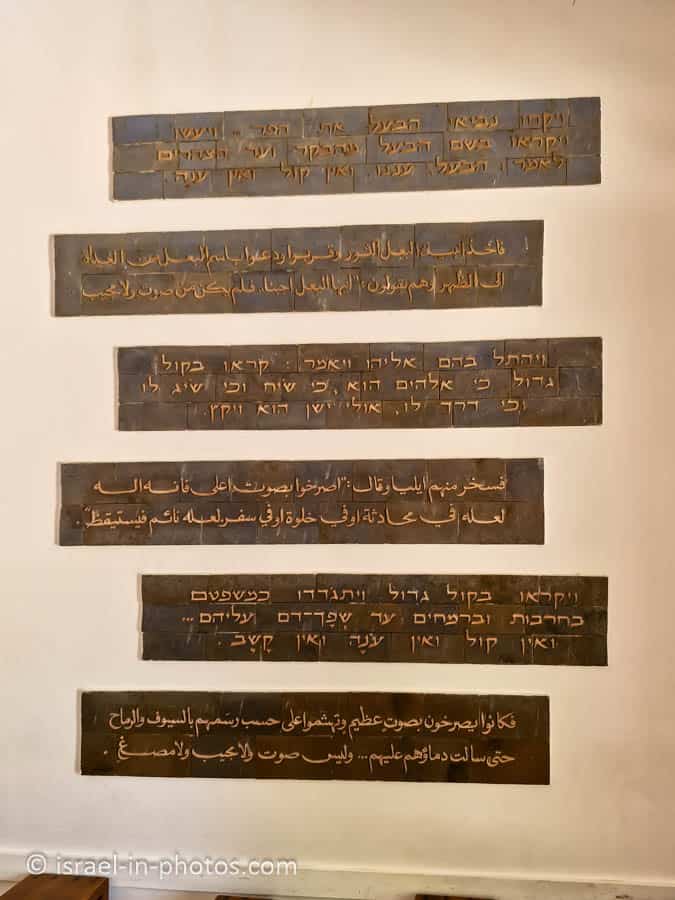

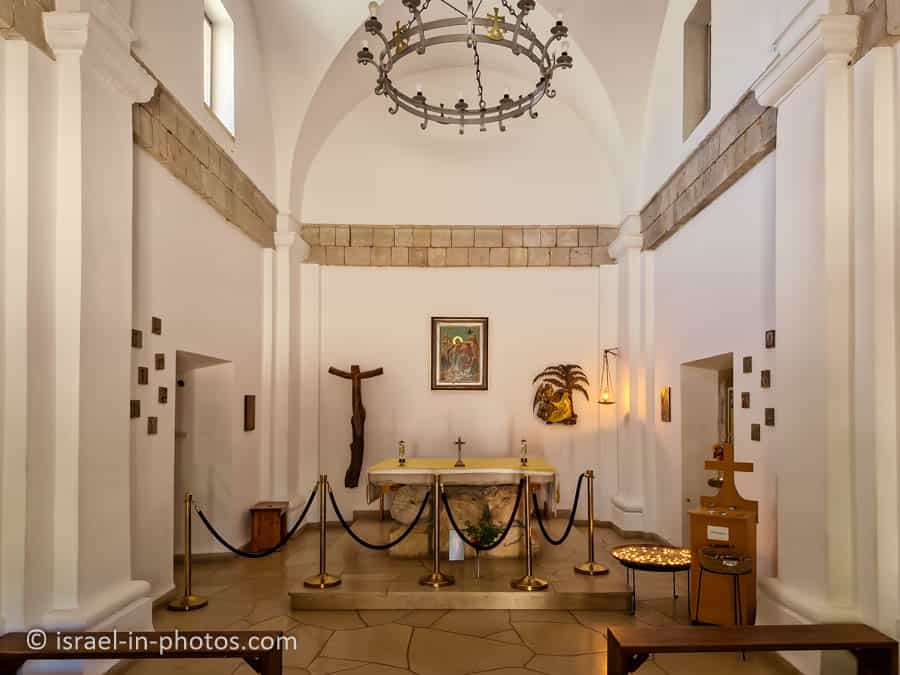
The Viewpoint
You can take the stairs to access the roof of the monastery. The roof provides a great vantage point to see the entire area. Here are several photos from the roof:
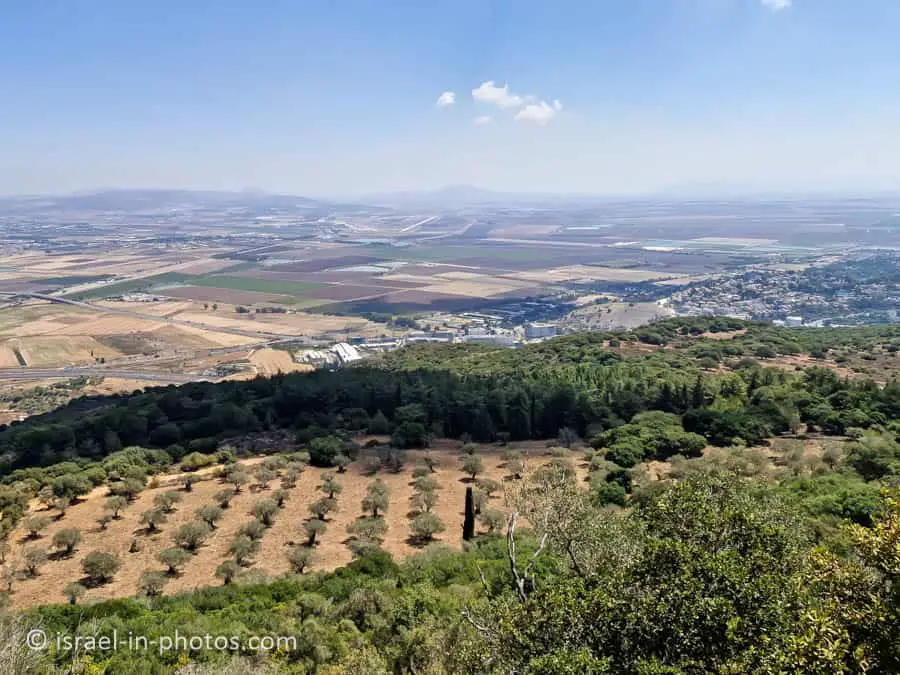
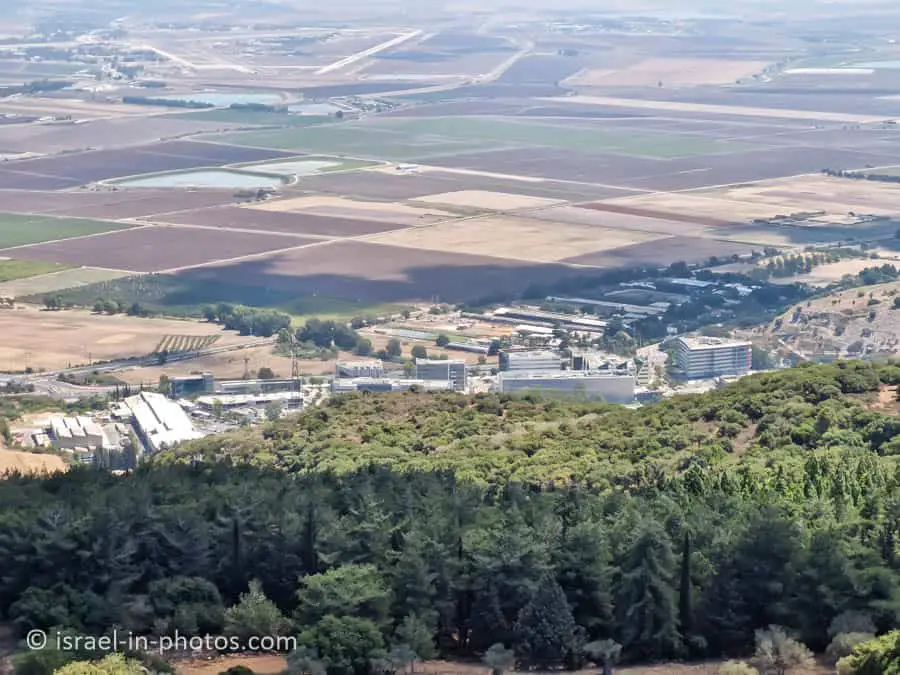
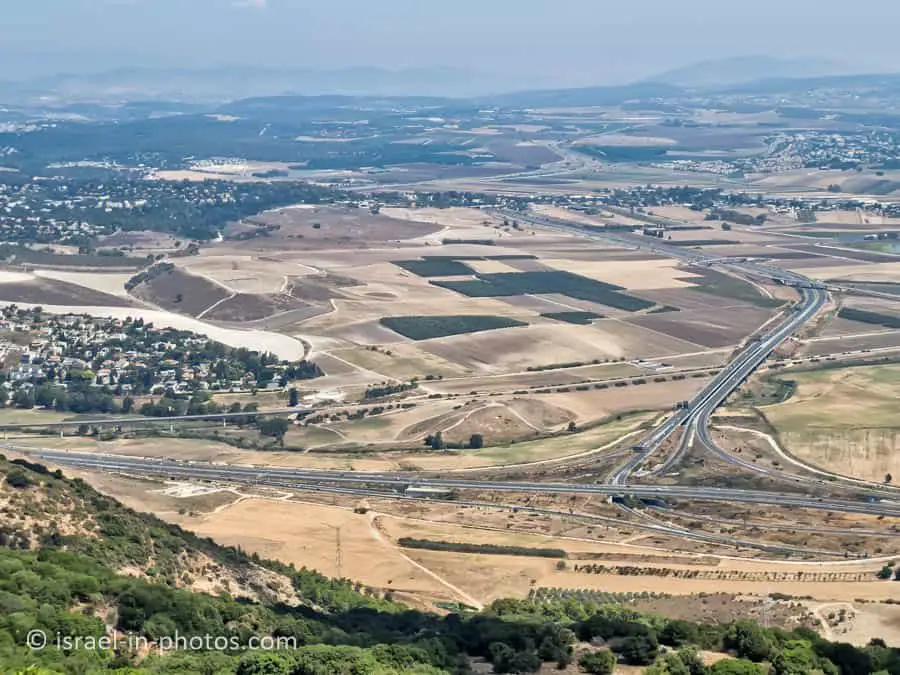
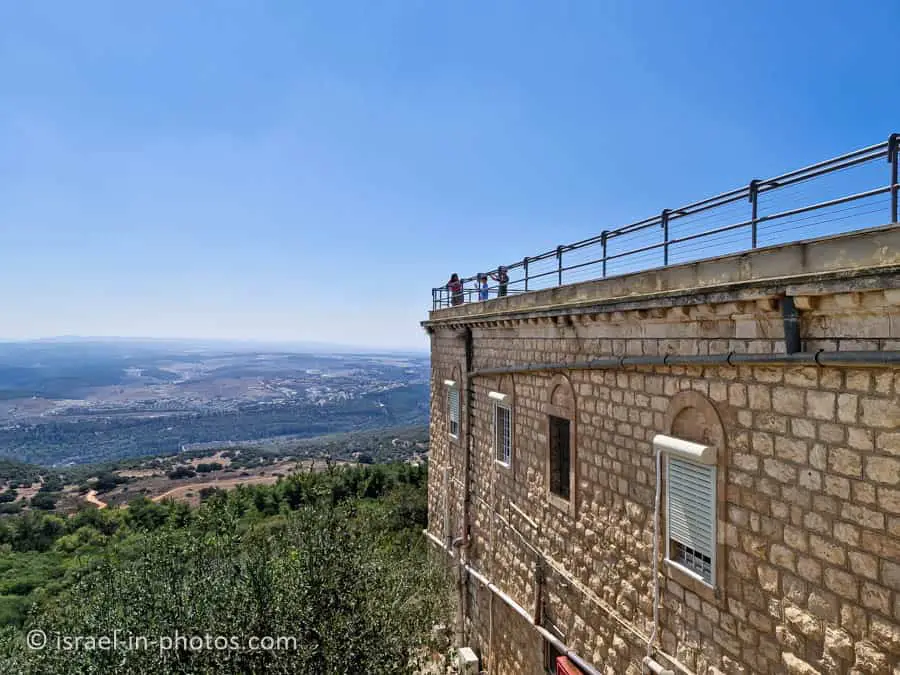
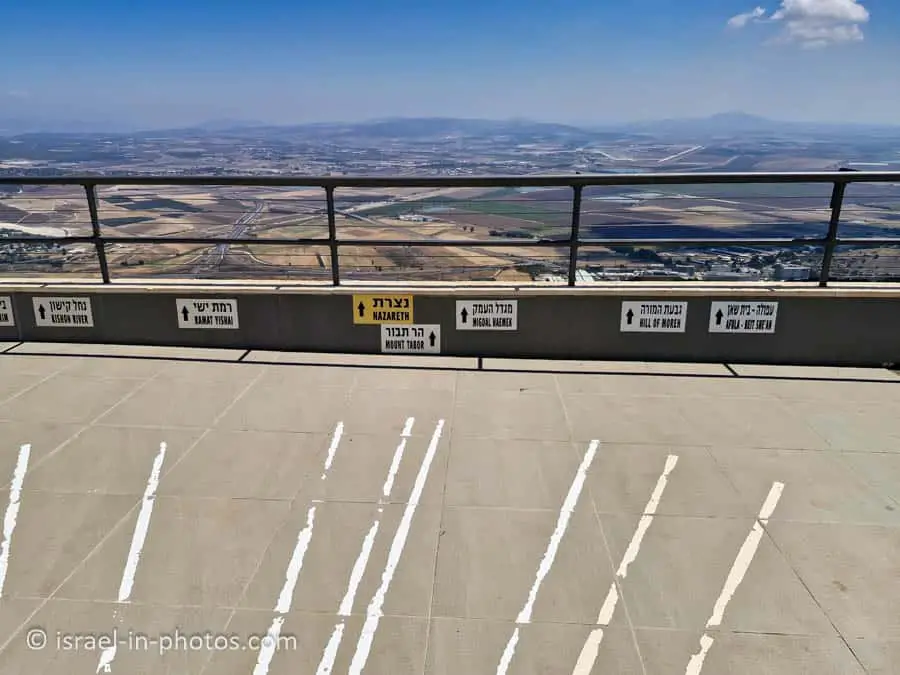

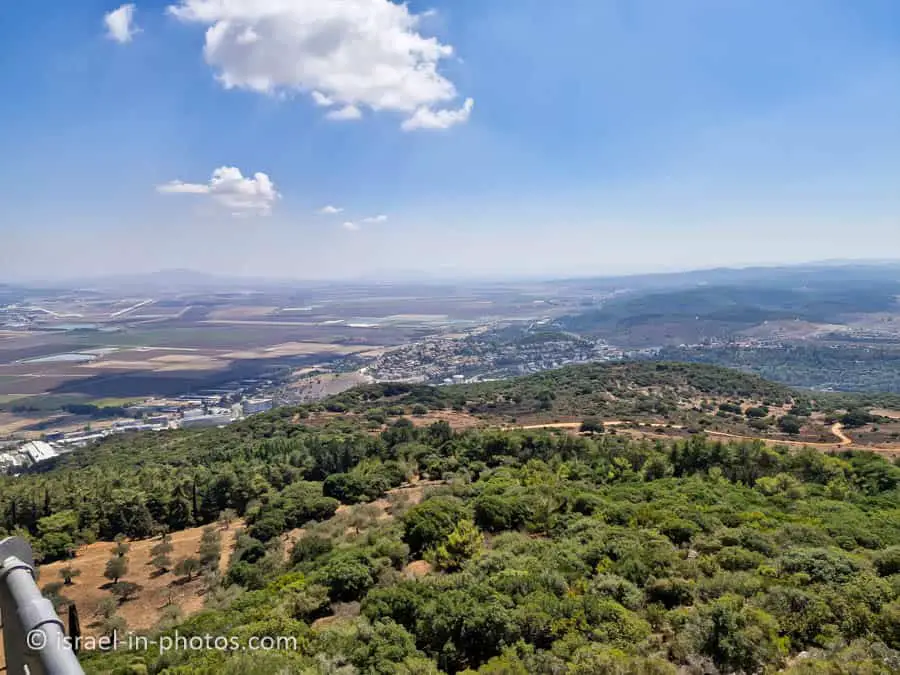

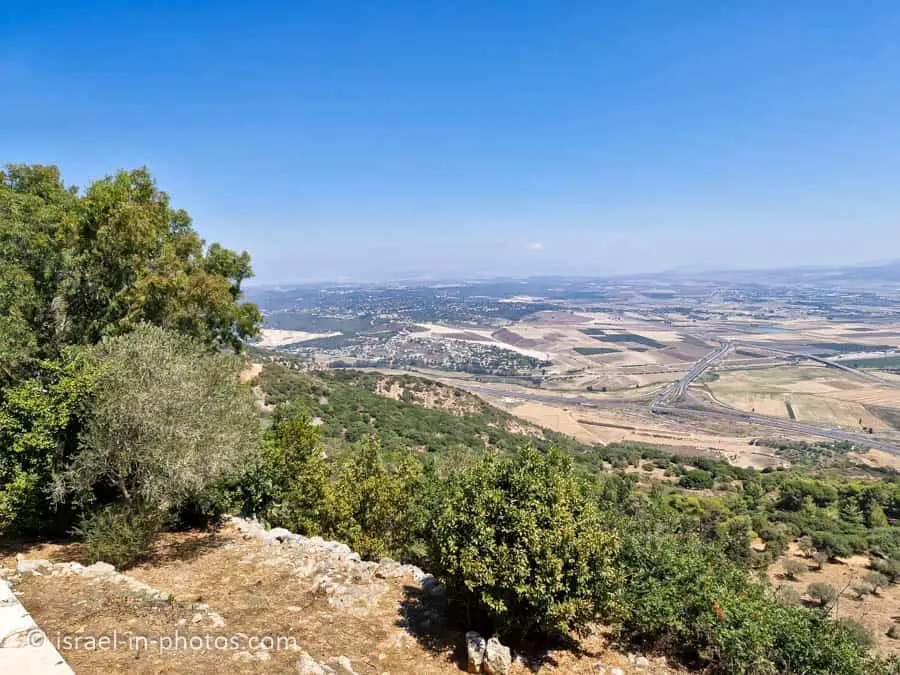
Summary
We spent about half an hour at the Muhraqa Carmelite Monastery. It’s a beautiful spot for a brief visit, and since there are many other attractions nearby, you can easily combine your trip with visits to other places. Additional points of interest are marked on the interactive map at the top of this page.
Have you ever been to the Muhraqa Carmelite Monastery? Tell us about your experience in the comments below.
That’s all for today, and I’ll see you on future trips!
Stay Tuned!
Additional Resources
Here are several resources that I created to help travelers:- Trip Planner with Attractions and Itineraries is the page that will help you create your perfect travel route.
- What is the Best Time to visit Israel? To answer this question, we will consider the weather, prices, holidays, festivals, and more.
- Information and Tips for Tourists to Israel will answer the most common questions tourists have about Israel (including safety, passports, weather, currency, tipping, electricity, and much more).
- Israel National Parks and Nature Reserves include a complete list, top ten, map, tickets (Israel Pass, Matmon, combo), and campsites.
- If you are looking for things to do, here are the pages for Jerusalem, Tel Aviv, Haifa, Sea Of Galilee, Akko (Acre), Eilat, Nazareth, Safed (Tzfat), and Makhtesh Ramon.




